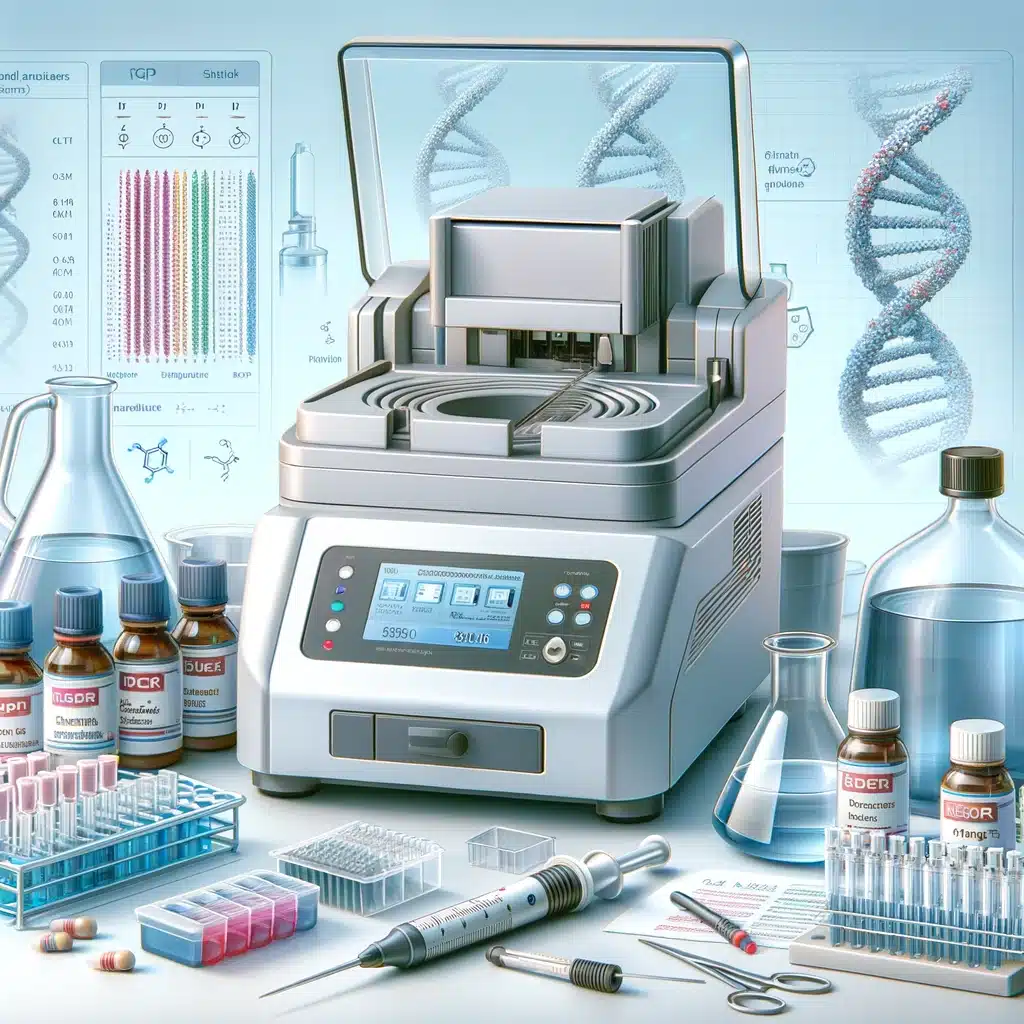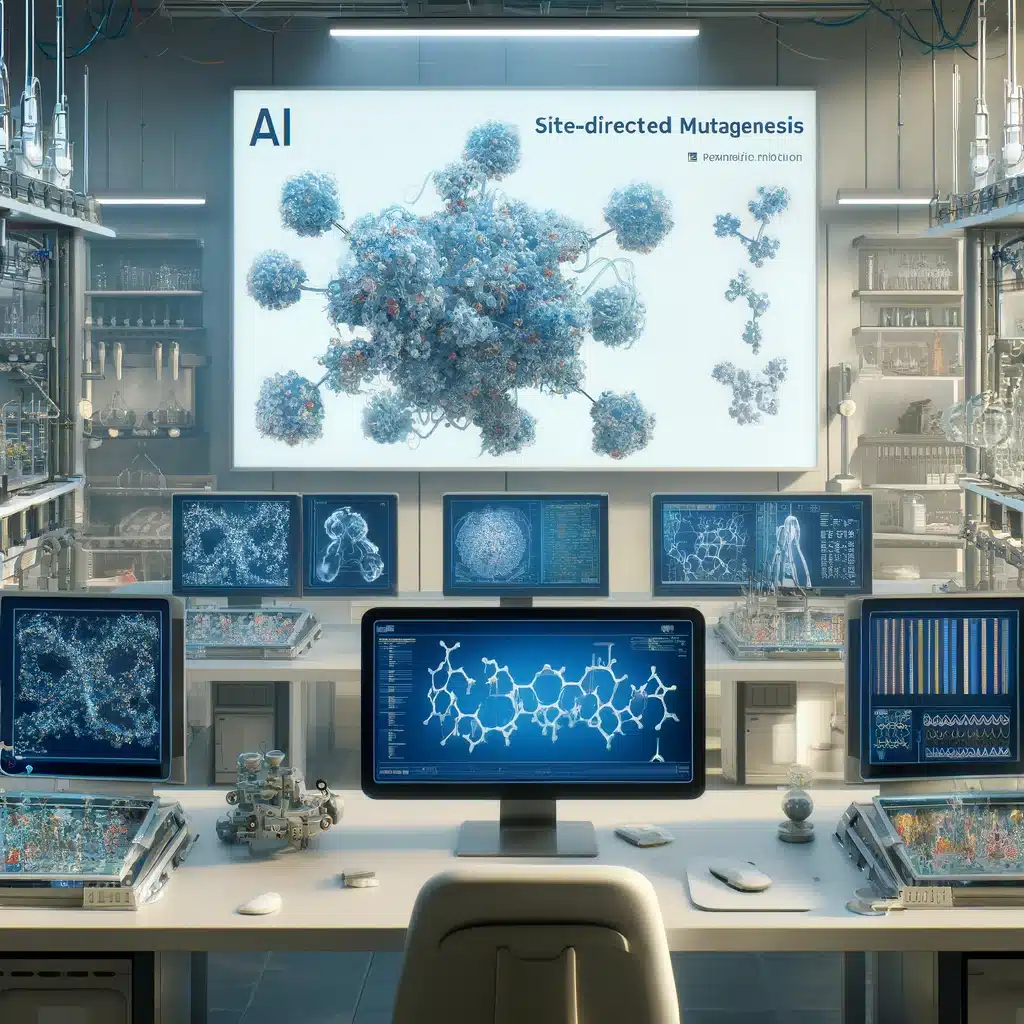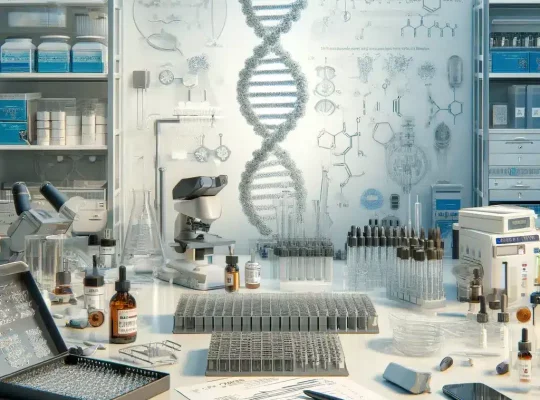Site-directed mutagenesis is a powerful technique that allows scientists to induce changes in genes and study protein structure and function across a diverse range of biotechnology applications; it is essential for everyone working on protein engineering. It typically involves the usage of a complementary oligonucleotide with one or more novel mutations to obtain a new copy of a template DNA with the designed changes. This enables the creation of libraries of variants. This technique has been used to induce changes in certain genes for further analysis. Applications of site-directed mutagenesis include the study of protein structure and function, as well as to develop new protein engineering techniques.
How can we harness site-directed mutagenesis power for tailored genetic solutions?
- Site-directed mutagenesis in protein engineering: by changing the amino acid composition of proteins, it is possible to create undiscovered varieties with novel functions or to determine structure-function relationships in proteins. Some applications of protein engineering include:
- Food industry: Novel variants of enzymes can be created, such as lipases, amylases, proteases, etc., including features like heat resistance, longer shelf-life stability, higher specific activities, broader/different temperature and pH activity range, and altered substrate specificities.
- Environment: The design of enzymes to biodegrade pollutant compounds has been increasingly used in bioremediation efforts. An example of this is the work done so far with PETases to make them more efficient on PET degradation to make them amenable to feasible industrial applications.
- Health industry: The production of recombinant proteins with therapeutic properties, gene therapy, and diagnosis are some examples of applications in healthcare. Specifically, the usage of therapeutics against cancerous cells, specific small-molecule delivery, antibody-based therapies, and biopharmaceuticals have been developed.
- Site-directed mutagenesis in crop improvement: Site-directed mutagenesis has been used as a powerful tool in creating novel variants with heritable traits for cereal, horticultural, and oilseed crops; by changing the function of natural genes, it has been possible to create novel variants with heritable traits.
What obstacles lie in the path to precise genetic editing?
Although a powerful and widely used tool, it poses several challenges. In this article, we’ll review some of the most common ones and discuss some common site-directed mutagenesis troubleshooting.
1- Primer design
A poor primer design can lead to undesired results, such as incomplete or multiple amplification products, as well as no products at all. In the case of PCR-based site-directed mutagenesis efforts, the desired mutations are designed on the primers, and it can become more prone to errors when there are multiple mutations on a single sequence.
Besides the regular optimization steps for primer design, it is recommended to consider a primer length of around 30 bp, locate the mutated site in the center, and try to change only one bp per codon (however, longer primers are recommended in some cases). Overlap extension PCR may be a good technique if you want to increase the efficiency of your process, but the primer design stage will as well increase its complexity.
Not to mention that this process must be carried out for each one of the mutations to be added, so the greater the number of mutations, the greater the likelihood of complications. Additionally, if you prefer to go with assembly techniques (Gibson, Golden Gate, etc.), more parameters should be taken into account.
As you can notice, manually designing your primers could be a challenging experience due to the amount of considerations you’ll have to take, as well as the potential mistakes. Then, having a tool to automatically generate site-directed mutagenesis libraries with customized primers can make this step easier for you. On TeselaGen’s Design Module, it is possible to do it with your own customized parameters.

But… how to take the considerations that work best for my designs?
Some other considerations may include: paying attention to the GC content, keeping it around 50%, and ensuring the primers have a GC ending (since they have higher binding affinity). The best advice would be to ensure that you have all the parameters you need for your specific case, considering not only the design but also the build and test steps (this is, consider your reagents, final desired products, reaction workflows, etc.).
Either you’re working with with overlap extension using PCR-based site-directed mutagenesis or traditional assembly methods, a manual design can get complicated. The Design Module of TeselaGen’s software offers a primer design tool that can analyze your desired parameters and create a library of primers for your specific needs.
2- Getting no colonies after the transformation
In some cases, after the transformation process with the mutated DNA, the number of colonies obtained is too low, or there are no colonies at all. Although this can have multiple reasons, the first thing to pay attention to is the methods you used to create the mutations and incorporate them into your organism. It is important to ensure the efficiency of your primers, add both positive and negative controls on the PCR, as well as double-check the amount of reagents and cycles during the experimental design of your transformation process.
How important is my experimental design? How can I change it to improve my results?
The problem of having no results or having results different from what you expect is caused (in general terms) by poor experimental design. Pay especial attention to the assembly method (Gibson, Golden Gate, etc.) and take into account the specific considerations for each one of them to increase their efficiency. Since manually doing this can be a thorough task, the usage of tools that make it easier for you is a way to increase your experimental performance while decreasing the amount of effort by automating it. On the Design Module of TeselaGen’s Software there are many tools to design, analyze, and track your work.
In addition, once you’re in the Build Module, consider the usage of tools to report, track, and plan your experiments and the data associated; this “quality control system” will make it easier to track which factors are affecting your transformation efficiency.
3- Unintended effects
Many undesirable effects can appear as a result of a bad design like off-target effects or unintended mutations. To avoid this, it is important to pay special attention to the design phase, where some strategies can be implemented, such as the selection of certain strains or optimization of the vectors used.
Furthermore, when using site directed mutagenesis in protein engineering, the effect of the change of certain amino acids on a protein’s structure, characteristics, and functions is unexpected and difficult to predict.
Using computational tools to maximize the scope of your predictions
Since some mutations can lead to unexpected characteristics in mutant proteins, considering strategies such as techniques, to predict functional outcomes of mutations, particularly large-scale may be useful to avoid undesired features that could affect the functioning of your biological system. Computational approaches have become more useful as the ability of computers to process large sets of data increases, which allows them to predict and optimize the functioning of mutant constructs.
New applications: The usage of AI in protein engineering
Nowadays, with the development of Artificial Intelligence tools, it has become possible to use AI prediction-based models on site-directed mutagenesis to analyze protein structure. These strategies include computer modeling and molecular docking to understand the peptide conformation of a protein and its signal transduction and ligand-receptor interactions. Some tools (like AlphaMissense) can identify relevant mutations and predict variants, while some others (like DeepChain) calculate the probability of each possible mutation and carry out in silico mutagenesis experiments.

4- Inefficient experimental methods
The build step of any site-directed mutagenesis effort is critical for the success of the experiments and obtaining results. In the case of PCR-based site-directed mutagenesis (specifically when using overlap extension PCR), there are some strategies that, though useful for a traditional PCR, can cause problems with the final product.
It is mandatory to purify your fragments to ensure a successful output of your assembly strategy. In addition, it is mandatory to purify your primers and isolate your mutant construct at the end to verify its identity and integrity. One of the most important things to consider whenever you are using a PCR protocol is the quality of your reagents, including the quality and concentration of the template DNA.
Remember that the length of your primers is important, as well as the length of your targets. Tools like TeselaGen’s Design Module allow you to obtain a detailed J5 report to obtain the considerations for your Design phase and then incorporate them into your Build phase experiments.
It is also important to have control of the quality of your DNA, master mix, and workflow design by choosing the appropriate biological material and reagents; even the construction of a reaction map may be useful to improve your results and avoid a failed effort. For this, a Lab Inventory Management System (LIMS) can be extremely useful to keep track of all your materials both in your laboratory and in your designs, allowing you to select by date, purity, efficiency, etc.
5- Considerations when adding multiple mutations
The addition of a single novel mutation to a sequence is a difficult task by itself; however, sometimes it is necessary to add more than one mutation or perform large-scale site-directed mutagenesis experiments, thus increasing the complexity of the considerations needed. Even when predicting the effects of a given mutation, adding multiple ones can lead to epistatic effects between the mutations. Then, combining, studying, and predicting how they behave together may be one of the most challenging processes. This also includes the considerations of hierarchical designs for larger sites and the selection of restriction enzymes needed.
TeselaGen’s Discover Module offers tools to explore the possibilities of mutation combinations on a protein: by giving the software some parameters and the possible combinations, it is capable of analyzing the experimental design that will most likely work on your workflow.
If you’re facing a challenge in the field of protein engineering, you can benefit from using TeselaGen, an end-to-end software platform that offers a range of features across the DBTL cycle. With TeselaGen, you can optimize primer design, annotate libraries, and track your experimental and production workflows. Additionally, the platform provides a lab inventory management system and AI algorithms that can help you develop high-performance bio-based products in a shorter time frame. With the support of a team of bioinformaticians and molecular biologists
Learn more on how TeselaGen Biotechnology is enhancing protein engineering workflows here
